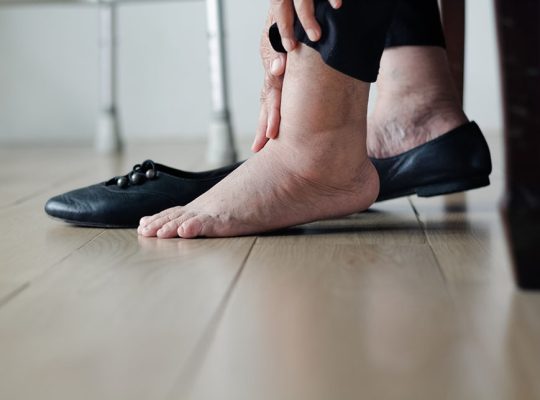Causes and Solutions for Insomnia in Children
A child has a great need for sleep during growth for his health and balance. Until 3 years old, sleep disorders are frequent but not serious.
Let’s see the different causes of sleep difficulties and waking up during the night, their characteristics, and possible solutions.
Insomnia in children: the child’s sleep-wake rhythm
A child needs to rest as soon as he or she feels the need to do so and must respect his or her rhythm while prioritizing naps. Make sure that bedtime is regular:
At birth, a newborn sleeps 16 to 20 hours a day with short wake-up cycles during which he drinks.
Between 3 and 6 months, a day-night rhythm begins. During the day, he eats approximately every 3-4 hours.
Gradually, he sleeps for 10 to 12 hours at night.
His sleep becomes deeper and deeper, less and less agitated.
Between 6 and 18 months, the baby generally takes 3 naps, then 2 naps until around 18 months.
Until at least 4 years old, 1 to 2 hours of nap each afternoon are essential and help him to fall asleep more quietly at night.
Until adolescence, the child sleeps between 10 and 12 hours. If they can’t sleep that much, they may cry for no reason, get upset, or reject their meal. They may also have more trouble falling asleep or being restless.
Until the age of 10, it is necessary that he goes to bed around 8 pm.
Insomnia in children: the reasons

Difficulty falling asleep
Between the ages of 2 and 5, there are many difficulties in falling asleep:
Fear of the dark, of loneliness, of death…
The apprehension of separating from his parents for the night: the child keeps asking for a story, another cuddle, a glass of water, a lullaby; he tries to get into his parents’ bed…
Dysharmony between the parents’ rhythm and the child’s needs, cultural habits, etc.
Observe his rhythms
Observe his rhythms and meal and sleep times when the child is small.
In the evening, encourage a peaceful and reassuring atmosphere: a bath, a story, no screens (computers and television, with their bright screens, are too stimulating), daydreams and melodies, cuddles and lullabies, a small bedtime ritual…
Note: exposing children to screens in the morning before school is not recommended, as this could triple their risk of suffering from language disorders.
Remain calm, firm, and determined about boundaries and bedtime.
Generally speaking, in a single room, children over 6 months fall asleep more quickly, sleep longer, and wake up less often at night. In addition, this allows for more stable sleep patterns compared to babies who share a room or bed with their parents.
Sometimes, a consultation with a health professional lets us understand the family rhythm and habits, bringing a problem, concern, or anxiety to light. The parents then feel listened to and welcomed in their distress.
Note: young children (2 to 3 years old) who wake up frequently at night are at increased risk of developing emotional symptoms, conduct disorders, and inattention/hyperactivity by the time they are 5 to 6 years old. Hence the importance of early management of sleep problems.
Causes of insomnia in children
Children are awakened by pain. Some pains, as listed below, are increased during the night:
teething;
otitis;
ENT infections;
colds: a blocked nose prevents the child from sleeping deeply;
pinworms, small white worms in the intestine, cause itching and make the child grumpy; he has nightmares and often wakes up at night;
gastroesophageal reflux disease, manifested by pain or regurgitation;
cow’s milk allergy with eczema (the child needs to scratch), leading to disturbed sleep.
Good to know: don’t hesitate to ask the doctor’s advice if your child is not feeling well. Give them paracetamol before bed to feel less pain if they have an ear infection and chamomilla (homeopathy) during teething episodes.
Nightmares and night terrors
Nightmares and terrors are common in children between 3 and 6 years of age who wake up crying and feeling anxious. They can be provoked by a strong emotion during a family event: moving house, joining a nursery, birth of a baby… Reassure your child so that he/she goes back to sleep peacefully, and let him/her tell you about his/her bad dream.
Night terrors occur at the beginning of the night during a deep, slow-wave sleep phase, which explains why the child does not remember anything the following day.
The child or infant stands up, screams in bed, is terrified, and does not recognize you. After a few minutes, the child goes back to sleep.
Good to know: night terrors are not serious.
Between sleep cycles
During the night, the child has brief awakenings between sleep cycles. Some children go back to sleep, while others play in their beds, and others scream to call their parents for a bottle or a cuddle…
Reassure your child if he ever calls for you. Explain that it’s still nighttime and that he’ll go back to sleep.
Good to know: do not give your child syrup to make him sleep.
Insomnia in children and sleepwalking
It is more common in boys who leave their bed at night and walk around the house for a while as if they were awake. It occurs during an awakening in deep, slow-wave sleep. Again, the child does not remember it in the morning. Sometimes treatment is given.
Do not wake your child during a sleepwalking phase. Take him to bed quietly. Secure your home: locks on doors and windows so your child is not in danger.
Insomnia in children and snoring
The presence of large tonsils can cause obstructive sleep apnea. Several signs can manifest this:
loud and constant snoring;
a particular position to facilitate the entry of air into the lungs: the mouth is open, and the head is tilted backward;
Breathing pauses;
disturbed sleep;
Decreased school performance;
headaches;
poor growth and bedwetting in certain circumstances.
Hope this post has provided you with the information you were looking for. Remember to jot down a few words in the comments below.






